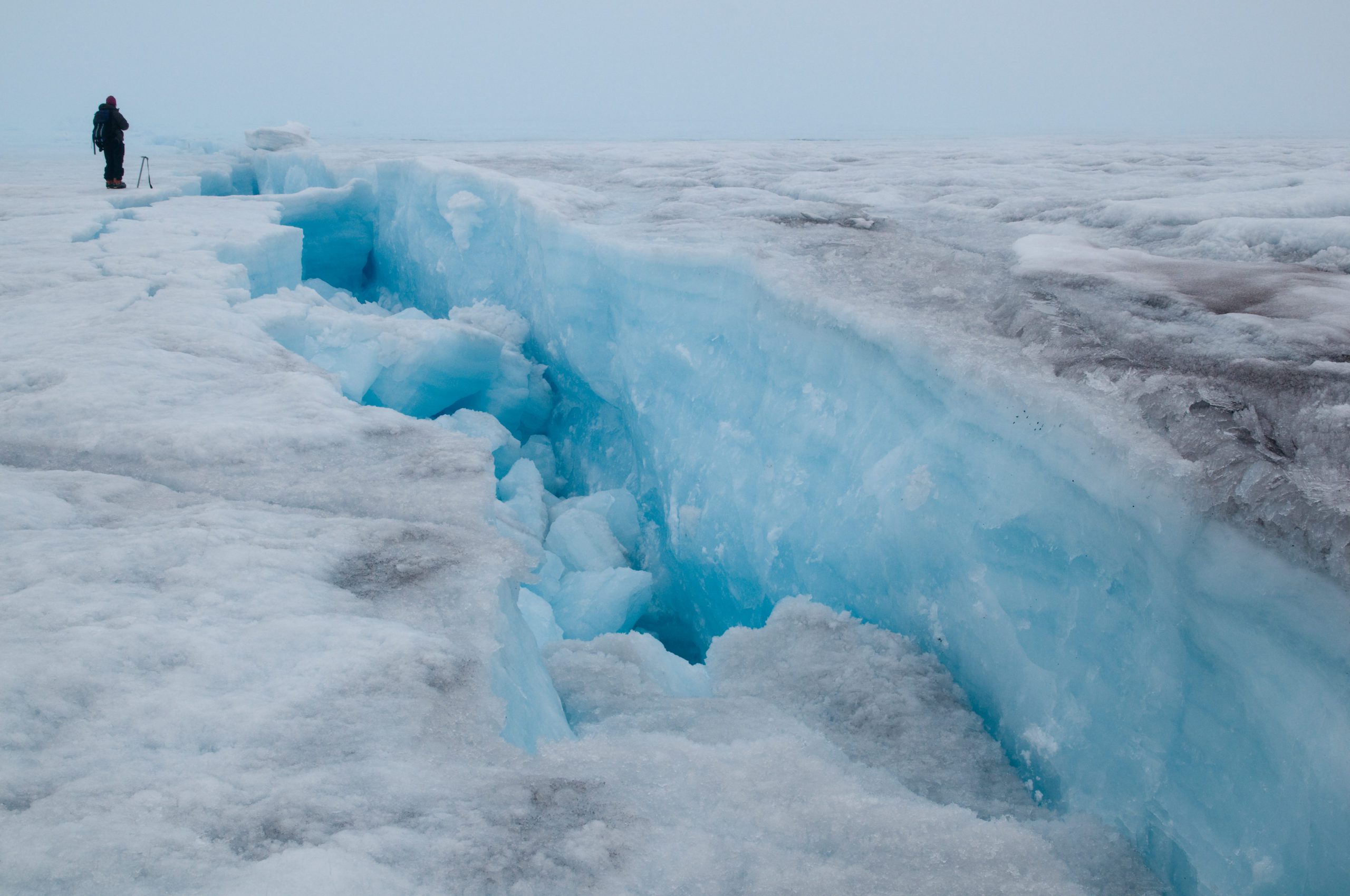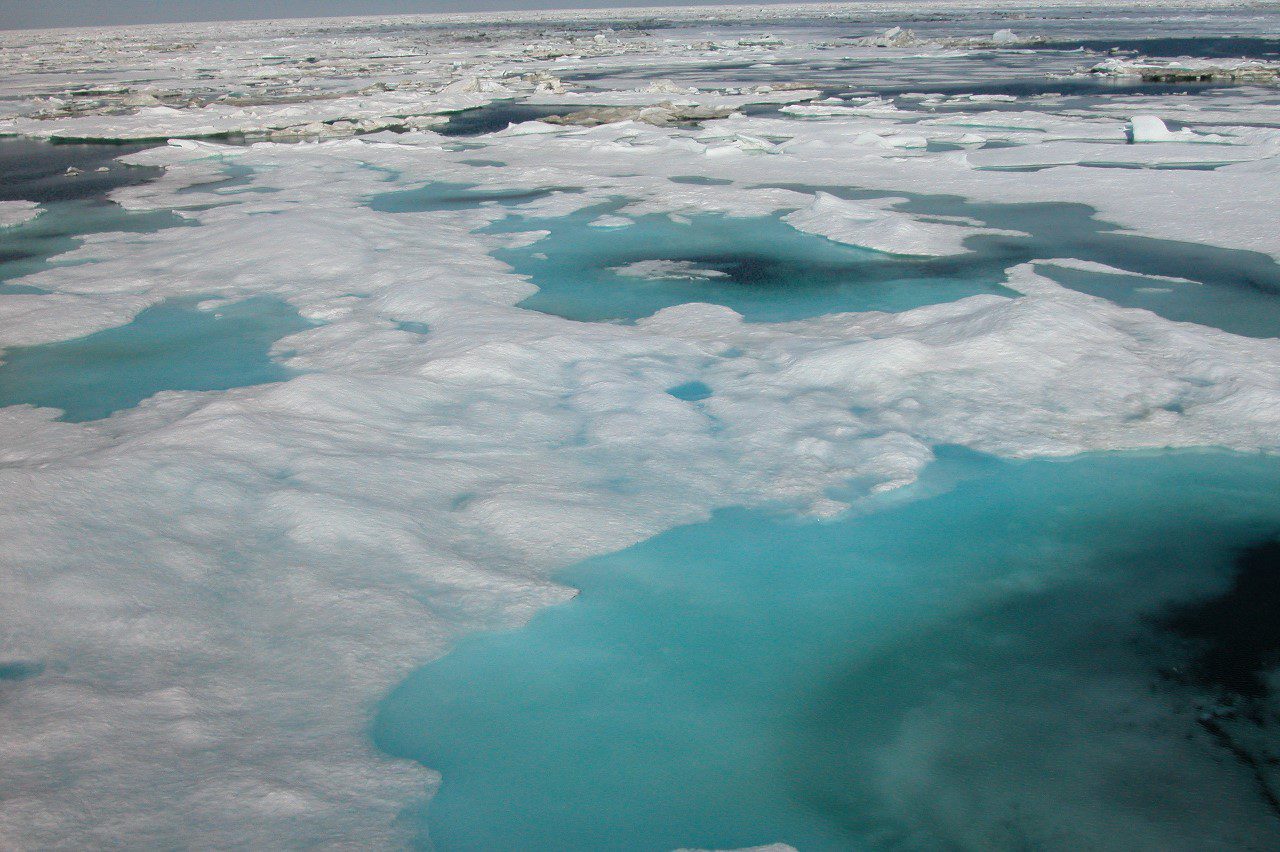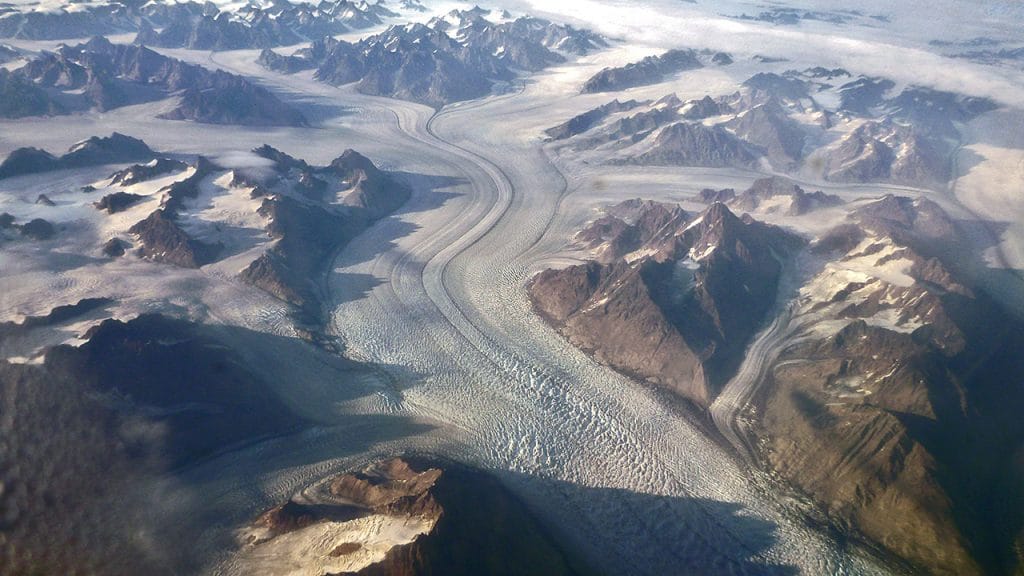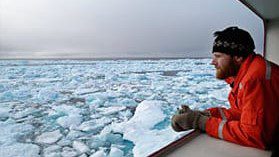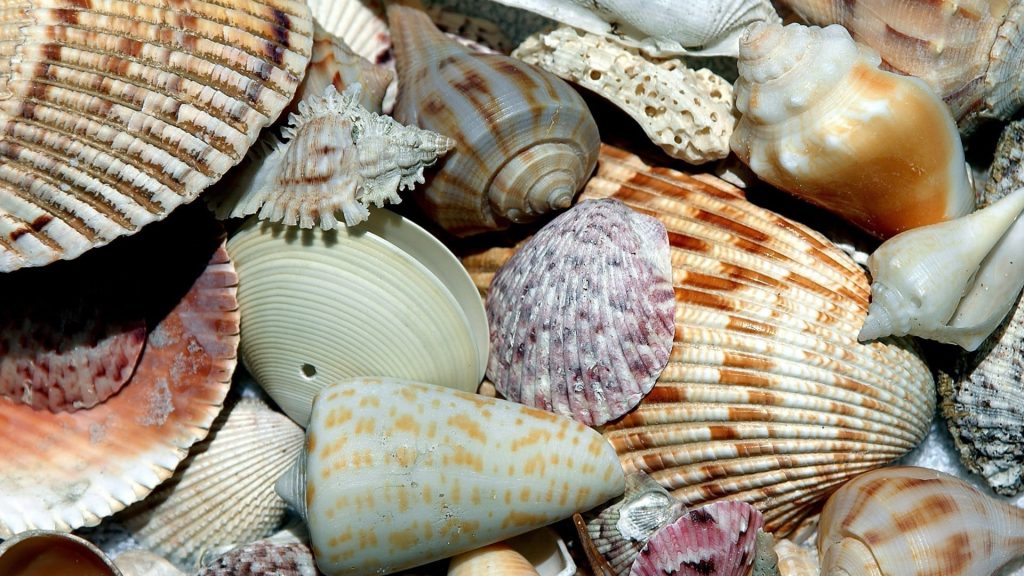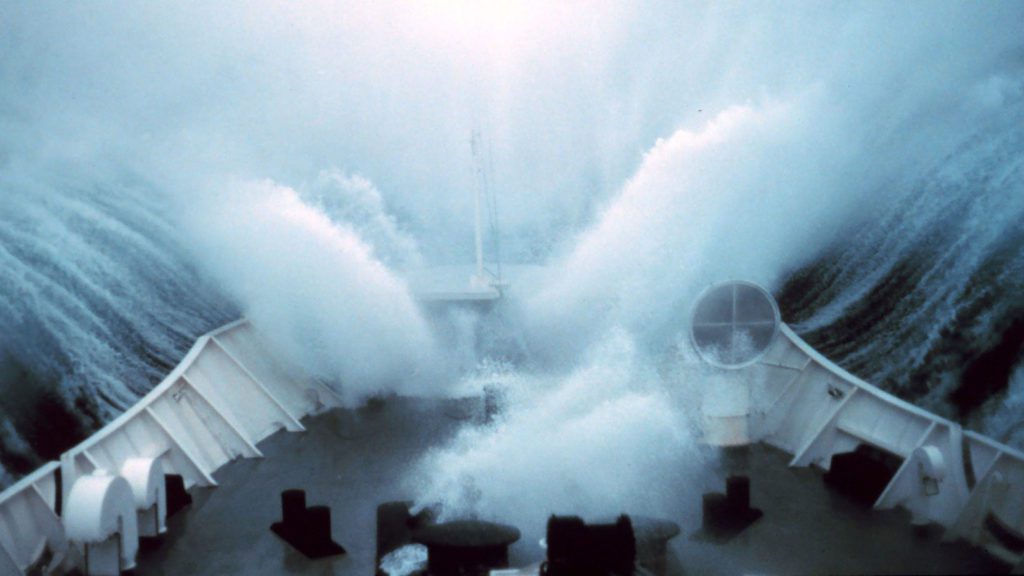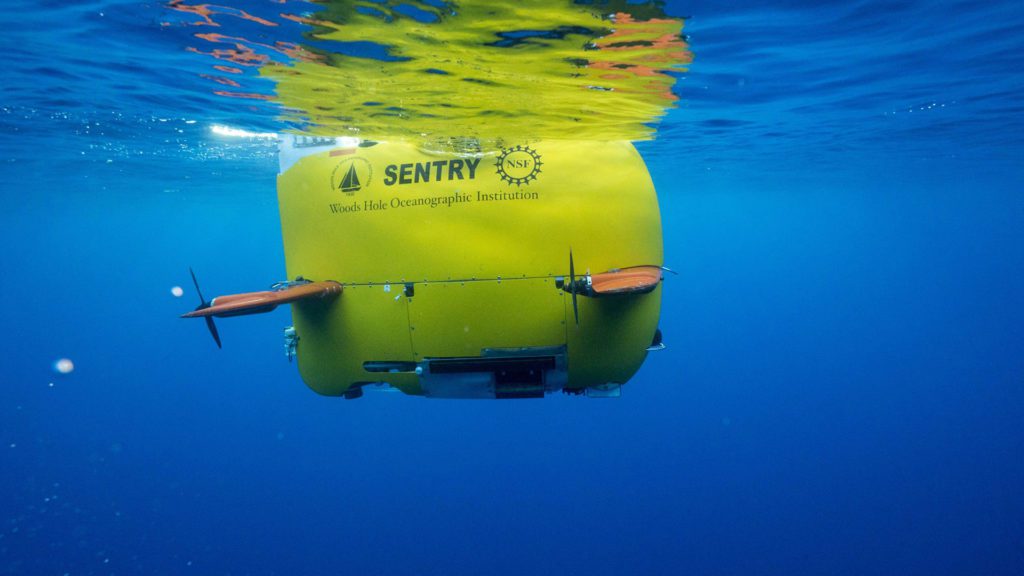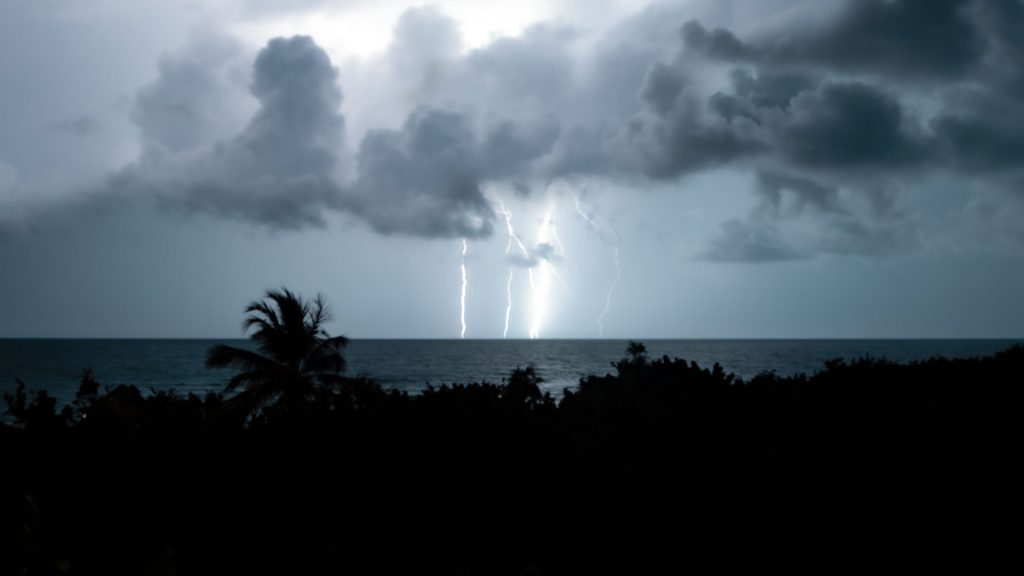Deep blue iceberg off Greenland (Photo by Lance Wills, Woods Hole Oceanographic Institution).
When sunlight shines on a field of snow, it reflects a bright—even blinding—white. But if you get a good look at the leading edge of a glacier, you’ll find that the ice inside is a brilliant blue. The surface may look white, but places where the ice has cracked open look almost turquoise. Ice deep inside a glacier or an ice sheet is always this deep hue. But why?
Sunlight includes all colors of the rainbow, from red to violet and everything in between. Light travels in a wave, and each of those colors has its own wavelength. This is the distance from the top of one wave to the top of the next. When white light travels through water droplets, they bend the light, creating a rainbow. Each wavelength creates its own band of color. Red has the longest wavelength, and the wavelengths get shorter as you move through the rainbow, with violet the shortest of all visible colors of light.
We see color when light reflects off the surface of an object. Some of the wavelengths of light may be absorbed by the object. Any that bounce off eventually reach our eyes, and we see the object as the color or colors that reflect back at us. White snow reflects all colors of light. A black t-shirt, on the other hand, absorbs all wavelengths of light. Green leaves absorb everything except the green that reaches our eyes.
One reason snow is so reflective is because there is so much air trapped between the snowflakes. Air bubbles scatter all wavelengths of light, making the snow appear bright white. The same is true of newly formed ice, which also traps air bubbles.
But over long periods of time, glacier ice is buried under new layers of ice and snow. These heavy layers press the air out of the deeper layers of ice. This not only removes much of the air, it also causes the ice to form large, dense crystals. When light hits these crystals, they absorb long wavelengths of light. At the same time, they scatter short-waved blue light, which makes the ice appear blue. We can only see that blue color when we see the deeper layers of ice. This happens along the leading edge of the glacier, where the ice is calving, or breaking apart.
The deep layers of ice in ice sheets are also blue. Ice sheets are typically covered with layers of new ice and snow that appear white. But in some parts of Antarctica, wind scours the surface, removing those upper layers. These areas can be a few football fields in size or cover thousands of square kilometers (hundreds of square miles). Here the old ice is exposed on the surface, revealing bright patches of blue amid the white snow.
RELATED VIDEOS
LEARN MORE
Glaciers & Ice Sheets
Glaciers are large ice masses created by snowfall that has transformed into ice and compressed over the course of many years. An ice sheet is a mass of glacial land ice extending more than 20,000 square miles.
The Many Forms and Shapes of Ice
Ice comes in many forms and shapes. Icebergs can be as big as a house, while newly formed sea ice can be thin and rubbery like a piece of pizza dough.
Alaska Satellite Facility. Glacier Power – Why is Glacier Ice Blue? https://asf.alaska.edu/information/glacier-power/glacier-power-why-is-glacier-ice-blue/
National Park Service. Common questions and myths about glaciers. https://www.nps.gov/glba/learn/nature/common-questions-and-myths-about-glaciers.htm
Oskin, Becky. Why are some glaciers blue? Live Science. May 30, 2015. https://www.livescience.com/51019-why-is-antarctica-ice-blue.html
Sinisalo, Anna & John C. Moore. Antarctic blue ice areas (BIAs) – towards extracting paleoclimate information. Antarctic Science, vol. 22. April 2010. doi: 10.1017/S0954102009990691.
DIVE INTO MORE OCEAN FACTS
How are seashells made?
One of the most striking features of our beaches is seashells. Their whorls, curves, and shiny iridescent insides are the remains of animals. But where do they come from?
What is a rogue wave?
Behemoth waves are more than just folklore. Learn the science behind these deadly swells
What are ocean robots?
From the icy poles to sensitive coral reefs, robots empower us to understand more of the ocean than ever before. But just what are they?
How does the ocean affect storms?
Under the right conditions, some of those storms can grow into large tropical storms. Or even monstrous hurricanes.

